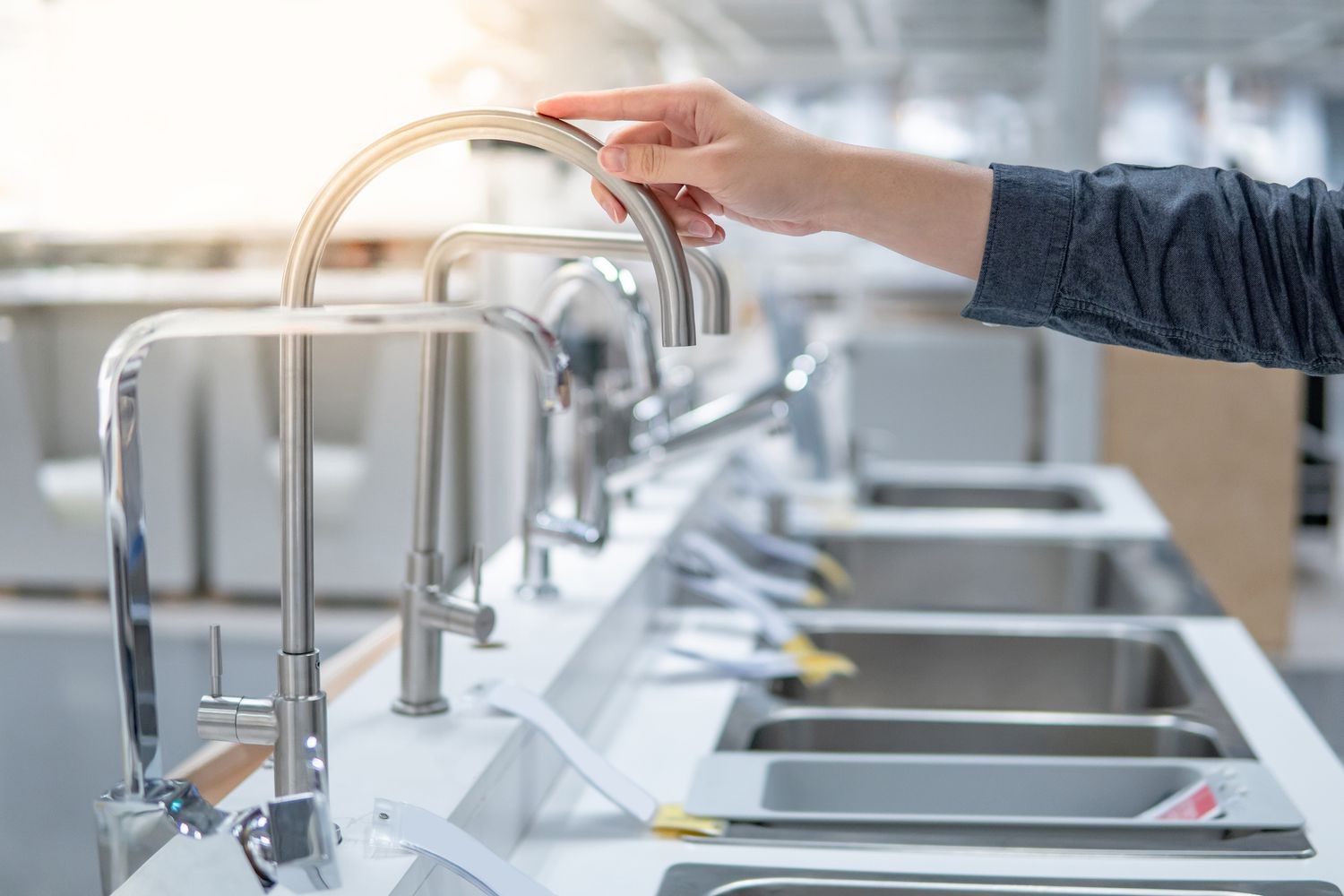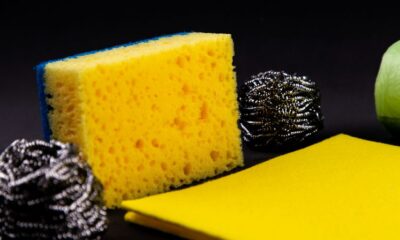Home Improvement
Faucet Installation: How To Choose The Most Stylish Yet Useful Faucet For Your Kitchen?

Introduction
When it comes to kitchen design, every detail matters. From the countertops to the cabinets, each element contributes to the overall aesthetics and functionality of the space. One crucial aspect that often gets overlooked is the faucet. Choosing the right faucet for your kitchen is not just about style but also about utility. In this article, we will guide you through the process of selecting the most stylish yet useful faucet that suits your kitchen perfectly.
Consider Your Kitchen’s Style and Design
Before delving into the world of faucets, take a moment to consider your kitchen’s style and design. The faucet you choose should seamlessly blend in with the overall aesthetic and complement the existing decor. Whether your kitchen boasts a modern, contemporary, or traditional style, there are faucets available in various designs and finishes to suit your preferences.
If your kitchen features clean lines and a sleek, minimalist design, a faucet with a modern design, such as a single-handle or pull-down faucet, can enhance the overall look. On the other hand, if your kitchen leans towards a more classic or rustic style, a faucet with intricate details or an antique finish may be a better fit.
It’s essential to choose a faucet that harmonizes with other fixtures and appliances in the kitchen. Consider the finish of your cabinet handles, lighting fixtures, and sink to ensure a cohesive look. By paying attention to these details, you can achieve a visually appealing kitchen space.
Types of Faucets
Once you’ve determined your kitchen’s style and design, it’s time to explore the different types of faucets available in the market. Understanding the features and advantages of each type will help you make an informed decision.
Single-handle faucets: These faucets have a single lever that controls both the water temperature and flow. They are easy to use and ideal for kitchens with limited space.
Double-handle faucets: As the name suggests, these faucets come with separate handles for hot and cold water control. They offer precise temperature adjustment but may require more space.
Pull-down faucets: These faucets feature a spray head that can be pulled down towards the sink. They provide flexibility and ease of use, especially when filling larger pots or cleaning the sink.
Pull-out faucets: Similar to pull-down faucets, pull-out faucets have a spray head that can be pulled outwards. They are convenient for tasks such as rinsing fruits and vegetables.
Consider your kitchen habits and preferences when choosing between these types of faucets. If you frequently handle large pots or have a deep sink, a pull-down or pull-out faucet might be more practical for your needs.
Materials and Finishes
When selecting a faucet, it’s crucial to consider the materials and finishes. Different materials offer varying levels of durability and require different maintenance routines. Here are some common faucet materials:
Stainless steel: Known for its durability and resistance to corrosion, stainless steel faucets are a popular choice. They are easy to clean and maintain.
Brass: Brass faucets have a timeless appeal and can add an elegant touch to your kitchen. They are durable and resistant to rust, making them a reliable choice.
Chrome: Chrome faucets are known for their polished and shiny appearance. They are easy to clean but may show water spots more prominently.
Apart from the materials, you can choose from a range of finishes to match your kitchen’s style:
Brushed nickel: This finish offers a matte look with subtle warm tones, making it suitable for both modern and traditional kitchens.
Oil-rubbed bronze: If you desire a rustic or vintage look, oil-rubbed bronze finishes can provide a rich and luxurious appearance.
Polished chrome: Known for its high shine and reflective surface, polished chrome finishes offer a sleek and contemporary look.
Consider the durability, maintenance requirements, and compatibility with your kitchen’s style when selecting the material and finish for your faucet.
Consider Functionality and Features
Beyond aesthetics, it’s essential to consider the functionality and features of the faucet. Look for the following aspects:
Temperature Control: Ensure that the faucet provides easy and precise temperature control. Opt for models that offer smooth handle operation and allow you to achieve your desired water temperature effortlessly.
Water Flow Options: Consider faucets with multiple water flow options, such as aerated stream and powerful spray. This versatility will come in handy for various kitchen tasks, from filling pots to rinsing dishes.
Spout Height: The height of the faucet spout is a crucial factor to consider. A higher spout provides more clearance for larger items, while a lower spout may be suitable for smaller sinks. Think about your specific needs and sink size when choosing the spout height.
Additional Features: Some faucets come with innovative features that can enhance your kitchen experience. Touchless operation, for example, allows you to turn the faucet on and off with a simple wave of your hand. Water-saving mechanisms, like flow restrictors, can help conserve water and reduce utility bills.
Consider your daily kitchen activities and choose a faucet that aligns with your needs. Whether it’s a pull-down spray head for convenient cleaning or touchless operation for a hygienic experience, prioritize features that will make your kitchen tasks more efficient.
Installation Requirements
Before making a final decision, it’s important to understand the installation requirements for the chosen faucet. While some homeowners may feel comfortable with DIY installations, others may prefer to hire a professional plumber.
If you have limited plumbing experience or if the installation seems complex, it’s advisable to seek professional help. A skilled plumber will ensure that the faucet is installed correctly, preventing any leaks or potential damage.
Additionally, it’s crucial to check the compatibility of the new faucet with your existing plumbing connections. Take note of the number of mounting holes on your sink and ensure that the faucet you choose aligns with those specifications.
Budget Considerations
Setting a budget is an important aspect of the faucet selection process. Faucets are available in a wide price range, and it’s crucial to strike a balance between quality and affordability.
While it may be tempting to opt for the least expensive option, remember that the faucet is a long-term investment. Investing in a higher-quality faucet can ensure durability, functionality, and fewer maintenance issues in the future. Consider your budget constraints and explore different brands and models within that range to find the best combination of quality and price.
Read Reviews and Seek Recommendations
When purchasing a faucet, it’s always helpful to read customer reviews and ratings. Online platforms provide valuable insights into the performance, durability, and customer satisfaction of different faucet models.
Additionally, don’t hesitate to seek recommendations from friends, family, or professionals who have recently installed new faucets in their kitchens. Personal experiences and insights can offer valuable guidance and help you make a more informed decision.
Maintenance and Care
Once you’ve chosen and installed your new faucet, proper maintenance and care are essential to ensure its longevity and performance. Here are some tips:
- Regularly clean the faucet using mild soap and water, avoiding abrasive cleaners that can damage the finish.
- Gently wipe the faucet dry after each use to prevent water spots and mineral deposits.
- Address any leaks or repairs promptly to avoid further damage and potential water wastage.
- Periodically check and clean the aerator to maintain a steady water flow.
- By following these simple maintenance practices, you can extend the lifespan of your faucet and keep it looking and functioning at its best.
Conclusion
Selecting a stylish and useful faucet for your kitchen involves considering various factors, such as your kitchen’s style, the types of faucets available, materials and finishes, functionality and features, installation requirements, budget considerations, and maintenance needs. By carefully evaluating these aspects and making an informed decision, you can find the perfect faucet that not only enhances the aesthetics of your kitchen but also provides convenience and functionality for your daily tasks.
Remember, a well-chosen faucet can be the centerpiece of your kitchen, adding both style and practicality. So take your time, explore the options, and select a faucet that suits your personal preferences, budget, and overall kitchen design. With the right choice, you’ll enjoy a stylish yet functional addition to your kitchen for years to come.
FAQs
Can I install a faucet myself, or should I hire a professional?
Installing a faucet can vary in complexity. While some homeowners with plumbing experience may feel comfortable doing it themselves, it’s often advisable to hire a professional plumber, especially for more complex installations. They have the expertise to ensure proper installation and prevent potential issues.
What is the average lifespan of a kitchen faucet?
The lifespan of a kitchen faucet can vary depending on various factors such as usage, water quality, and maintenance. However, a well-maintained and high-quality faucet can typically last anywhere from 10 to 20 years or even longer.
Are touchless faucets worth considering?
Touchless faucets offer convenience and hygiene benefits, as they eliminate the need to touch the faucet handles with dirty hands. They are especially useful when cooking or handling raw ingredients. While touchless faucets may have a higher upfront cost, many homeowners find them worth the investment.
How do I know if a faucet will fit my existing sink?
It’s important to check the compatibility of the new faucet with your existing sink. Start by determining the number of mounting holes on your sink. Most faucets come with installation options for single-hole, three-hole, or four-hole sinks. Ensure that the faucet you choose matches the number and spacing of the mounting holes on your sink.
Can I replace a single-handle faucet with a double-handle faucet?
Replacing a single-handle faucet with a double-handle faucet may require additional plumbing work and modifications. It’s best to consult with a professional plumber to assess the feasibility and potential requirements of such a change.
Remember, when in doubt or if you need specific guidance related to your kitchen’s unique situation, it’s always advisable to consult with professionals who can provide personalized advice and assistance.
-

 Home and Garden6 days ago
Home and Garden6 days agoTransform Your Space: A Guide to Minimalist House Interior Design in 2025
-

 Home & Family7 days ago
Home & Family7 days ago10 Essential Cleaning Hacks for Bathroom Surfaces You Need to Try
-

 Health & Fitness7 days ago
Health & Fitness7 days agoDiscovering the Best Multivitamin for Women Over 40: Essential Nutrients for Optimal Health
-

 Automotive5 days ago
Automotive5 days agoUnlocking Performance: Why the HP Spectre x360 is the Ultimate 2-in-1 Laptop for 2025
-

 Health & Fitness6 days ago
Health & Fitness6 days agoDiscover the Best Multivitamin for Women Over 40: A Comprehensive Guide to Optimal Health
-

 Crime7 days ago
Crime7 days agoExploring the Most Anticipated New True Crime Documentaries of 2025
-

 Business7 days ago
Business7 days agoMaximize Your Earnings with American Express High Yield Savings Accounts in 2025
-

 Gadgets & Electronics6 days ago
Gadgets & Electronics6 days agoTop 5 Unlocked Android Phones Under $100 for Budget Shoppers in 2025


















